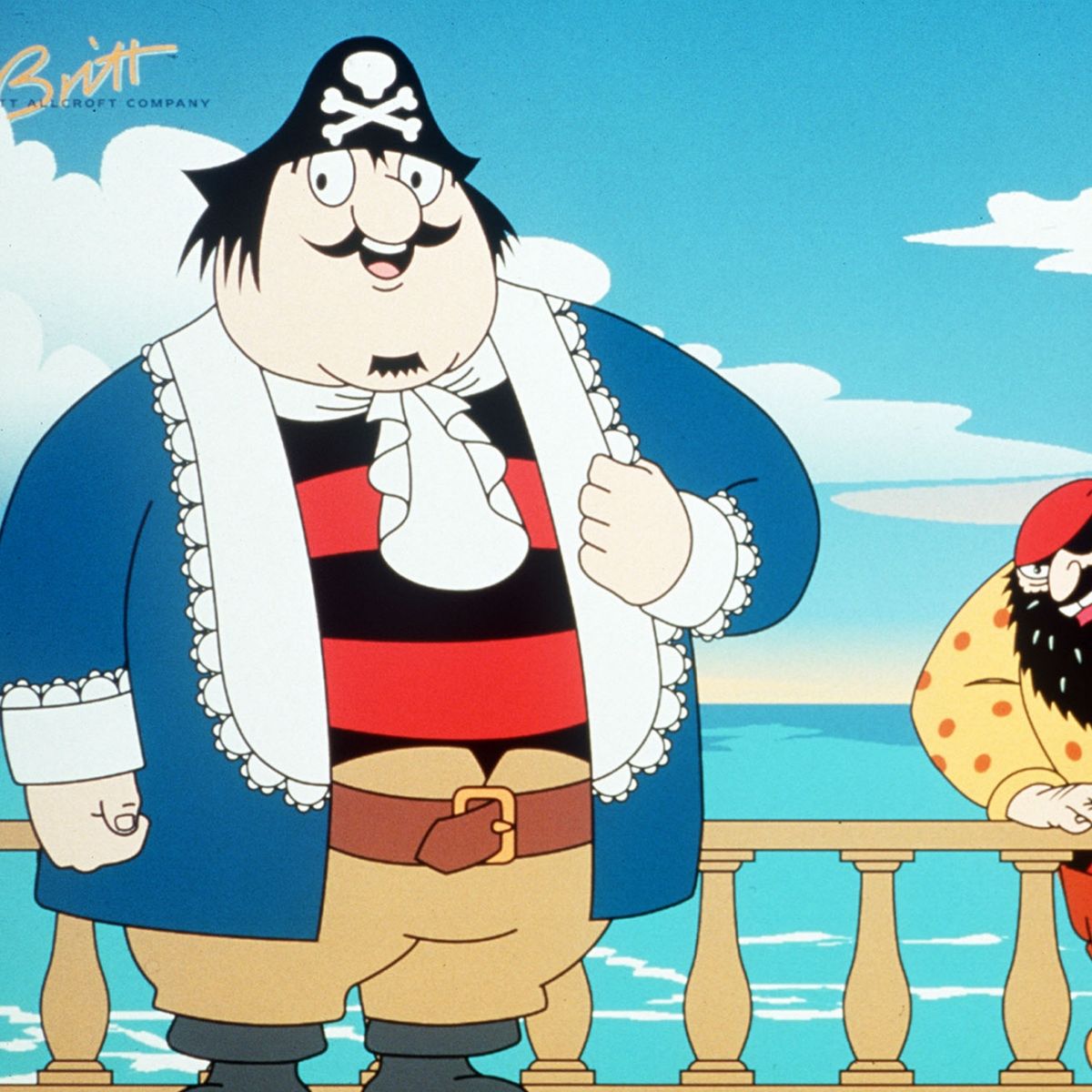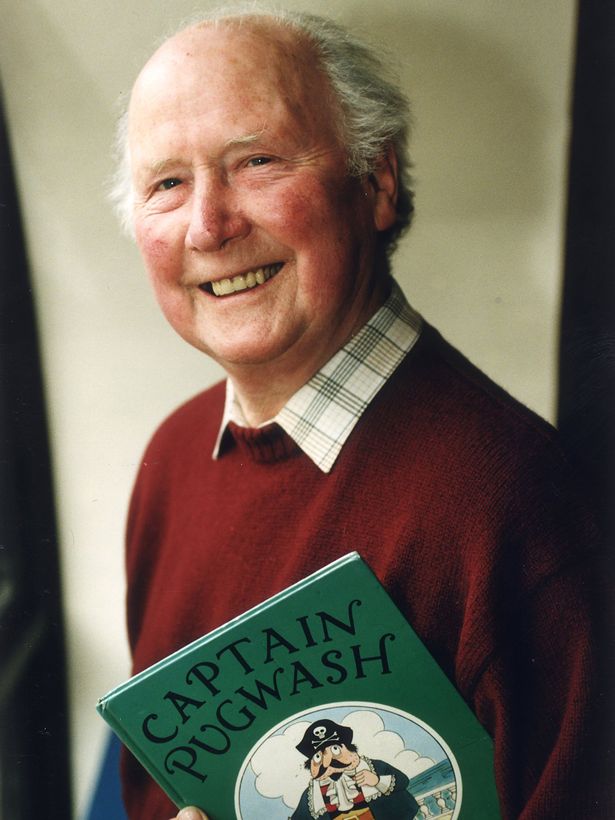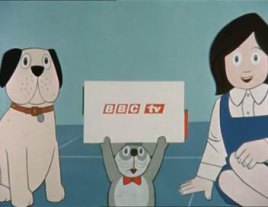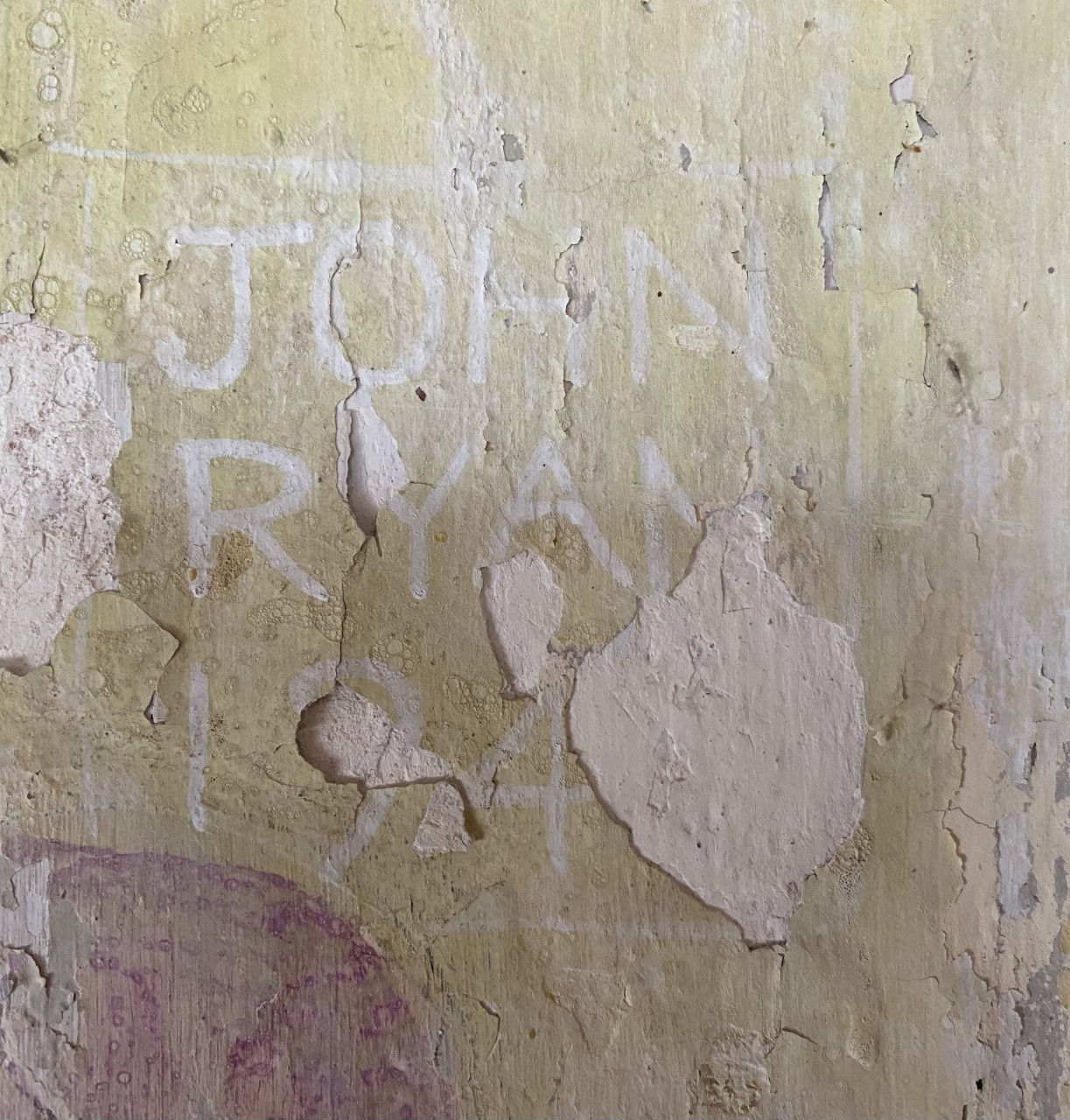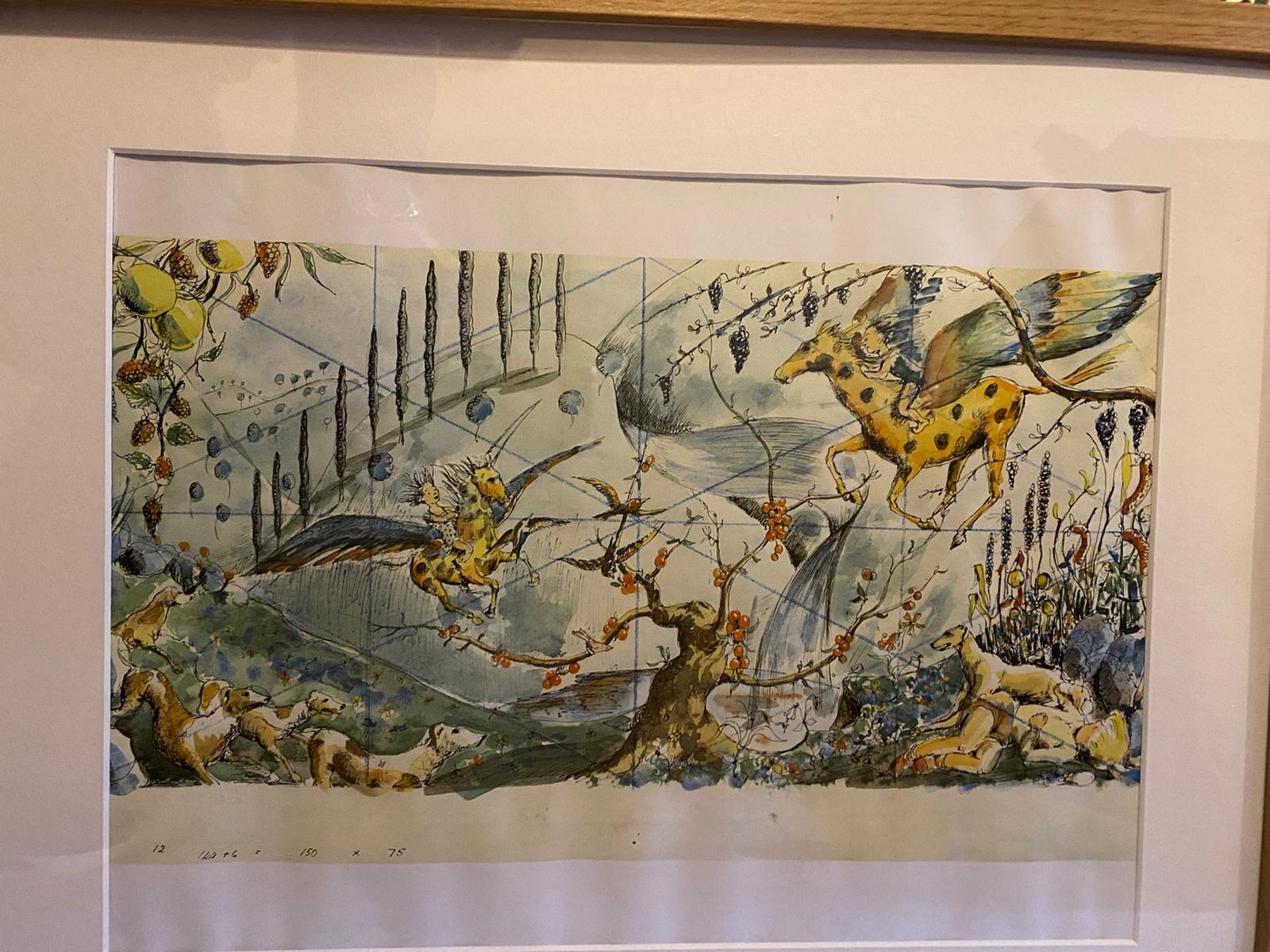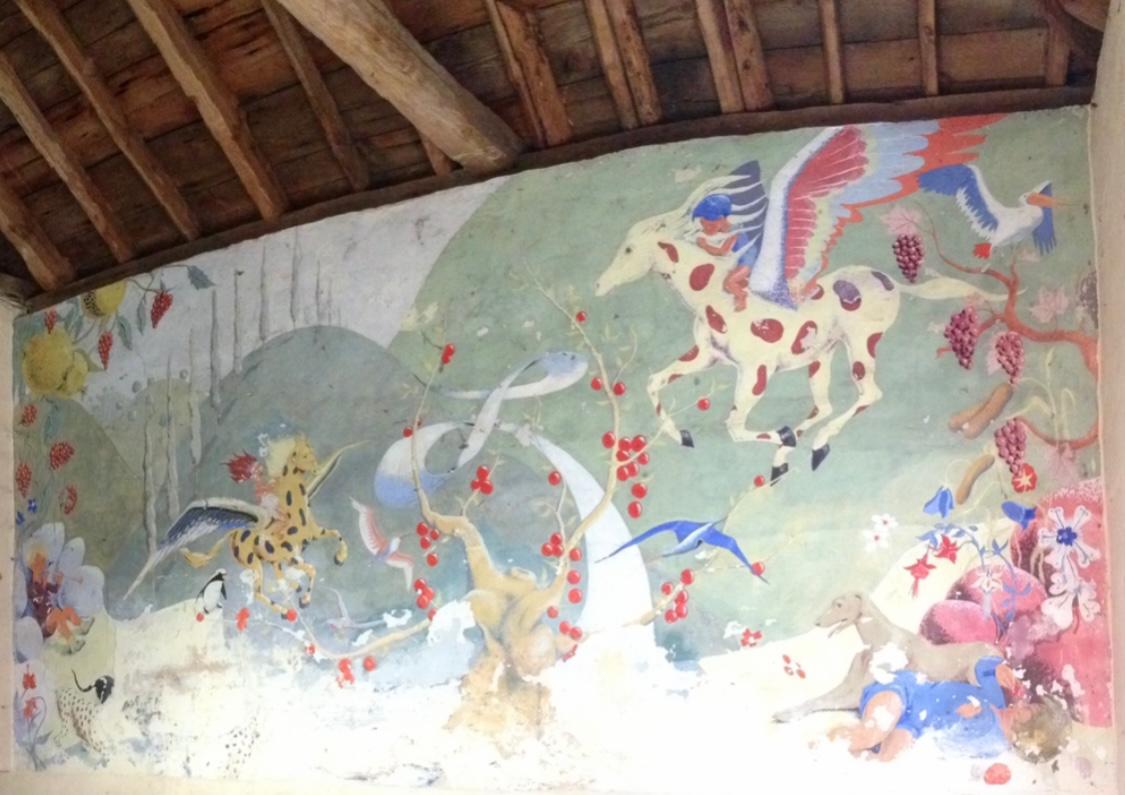Captain Pugwash
Whilst many of us remember the work of John Ryan, best known for ‘Captain Pugwash’, but few of us know the connection to East Bergholt.
- 16
- John Ryans connection to the village
Details
Lady Ryan, Johns Ryan’s Grandmother, lived in the village at ‘Short Acre’ and for many years John and his siblings would spend time here in the summers and could be perhaps were he first thought out his future of animation, as in the 1940’s he painted a ‘Fantasy’ mural on the wall of the coach house in the grounds of Short Acre, and of which still remains today.
The mural which expands the width of the coach house wall, painted in 1948 illustrates the ‘Lame child’ from the pied piper of Hamlyn, recounting the fantastical images of wonderful things to come, as described by the piper as he led the children for ever and ever into the mountainside, with the smaller original version of this scene, sits framed on the desk of John Ryans daughter, Isabel.
Ryan’s childish innocence created the ‘doollopping doublloons’ and ‘kipper me capstans’ that became so well known in its heyday in the 1970’s on BBC children’s television, as before the age of technology his was a groundbreaking technique of using cardboard cut-outs of characters, manipulated by levers against a painted background, but it was the creation of the characters that made him stand out from the rest and won him many awards.
Born in Edinburgh the son of a diplomat he wrote his first story at the age of 7 entitled ‘The Adventures of Tommy Brown’. School was followed by wartime service, then he studied art at Regent Street Polytechnic, but all the time he was working on cartoon characters.
Captain Horatio Pugwash was rejected 12 times before he made it to the first ever edition of The ‘Eagle’ comic, before spending 8 years in the Radio Times, and then first appearing on television in 1957 in black and white and finally in the mid 1970’s for its heyday.
Enthusiasts of The Eagle will also recognise other characters of Ryan’s creations including Harris Tweed, Lettice Leefe, and Sir Boldasbrass, and by 1954 he married his fellow artist Priscilla (and went on to have 3 children)
It was ‘Mary, Mungo and Midge’ that made Ryan’s name in television. Aimed at a younger audience than Pugwash, Ryan and Priscilla operated the levers themselves to make the movements of the hands, arms and mouths and even with its reputation there were only ever 13 episodes.
Sir Prancelot followed and clocked up 32 episodes, before Ryan turned back to Pugwash and made 30- five minute colour cartoons about the life on the Black Pig of Captain Pugwash and his crew, Tom the cabin boy, Willy and Barnabas and Master Mate as well as Cut Throat Jack, Pugwash’s arch enemy.
Around this time Captain Pugwash became the subject of an urban myth. The crew included characters that were more commonly believed to be Master Bates, Roger the Cabin Boy and Seaman Stains, all loaded with sexual innuendo and of which Ryan was both furious and devastated, and even though his lawyers successfully obtained public retractions, the urban myth remained.
With grown up Children Ryan gave up his London home and moved to the Sussex coast for a gentler pace of life.
A private man who never sought the limelight died in 2009 at the age of 88
With thanks to Ed & Claire for sharing this fantastic story with us.
©N.Reed
- 16
- John Ryans connection to the village

